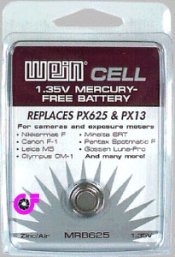Good morning, Suryo;
Get a large 18 % gray reflectance card; the one that is about 8 by 10. Take it outside with your light meter on a sunny day. Set the meter to a reference ASA film speed number and "Reflected Light" mode, not "Incident Light." With your back to the sun, hold up the 18 % gray card and aim the light meter at the card without casting a shadow onto the card. The light meter may give you a reference number to transfer to a dial. Set the dial to that reference number and look at the f 16 indicator on the aperture scale portion of the dial. Or just look at the f 16 indicator if the meter reads directly. The corresponding shutter speed number should match your reference ASA film speed number; that is, with the meter set to ASA 100, the f 16 point should be next to the 1/100th of a second shutter speed setting. Usually this will be simply 100.
If the number is 100 in our example, everything is good and you do not need to do anything.
If the number is different, then use a simple proportion ratio from your junior high school mathematics class to come up with a "correction factor." (And you thought that you would never have a chance to apply those things you learned in your high school mathematics class.) If the indicated number is 50, then the ratio is 100 to 50 or 2 to 1. That is a correction factor of "2." To get the meter to "indicate correctly," multiply the ASA film speed number by the correction factor (here in our example, by 2) to get the dial to work out correctly. Or, this works out to multiplying the ASA film speed number (100) by the correction factor (2) to get our new correction ASA film speed number rating (200) to get the meter to work properly and indicate to us the correct shutter speed. (If the f 16 indicated shutter speed was 200 instead, then that would be a ratio of 100 to 200 or 1 to 2 and a correction factor of one-half or 1/2.)
In the example, the meter was telling us that it would take a shutter speed twice (2 times) as long as it should for f 16 in sunlight. The meter was one stop off over exposed. By multiplying the ASA film speed number by two, we made the meter think that the light is one stop brighter than it really is, so the meter cut the shutter speed required for f 16 by one-half (1/2) to correct for the inherent error in the light meter. Usually we can assume that for the light levels we will normally work in, the meter's response will be linear.
You may hear people refering to the foundational principle behind this as "the sunny 16 rule." The 18 % gray reflectance card is a standard reference we can afford. If you do not have a camera tester with its built-in light meter testing facility, this is probably the most convenient and low cost way to make a fairly good quantitative assessment of your light meter.
Sorry about the length of this, but with the loss of the 1.35 VDC mercury batteries, just putting in a 1.5 VDC silver cell that has a very stable voltage over its discharge curve, or maybe a 1.5 VDC alkaline cell if nothing else is available, will require a check of the calibration. The Wien cells will also work very well, but they are more expensive and they do not last long. Then there is also the possiblity of buying (or even making) a replacement battery holder that will have the proper Schottky barrier diode, or perhaps a simple germanium diode, that has the ability to drop the battery voltage back to mimic the old mercury PX625 and provide the 1.35 VDC the meter expects to operate from. You can also have a camera technician install a Schottky barrier diode in the wiring inside the light meter, and then just use a 1.5 VDC silver cell in the regular place of the PX-625.













